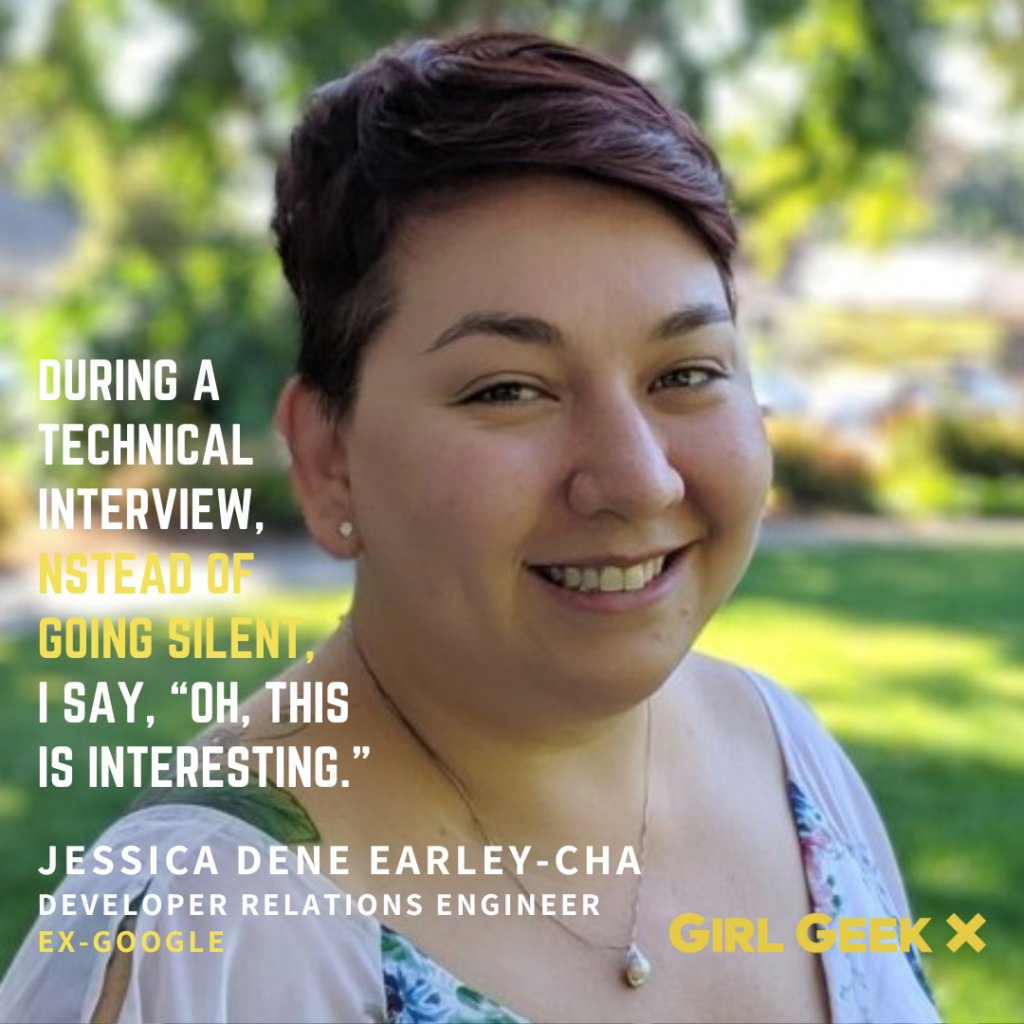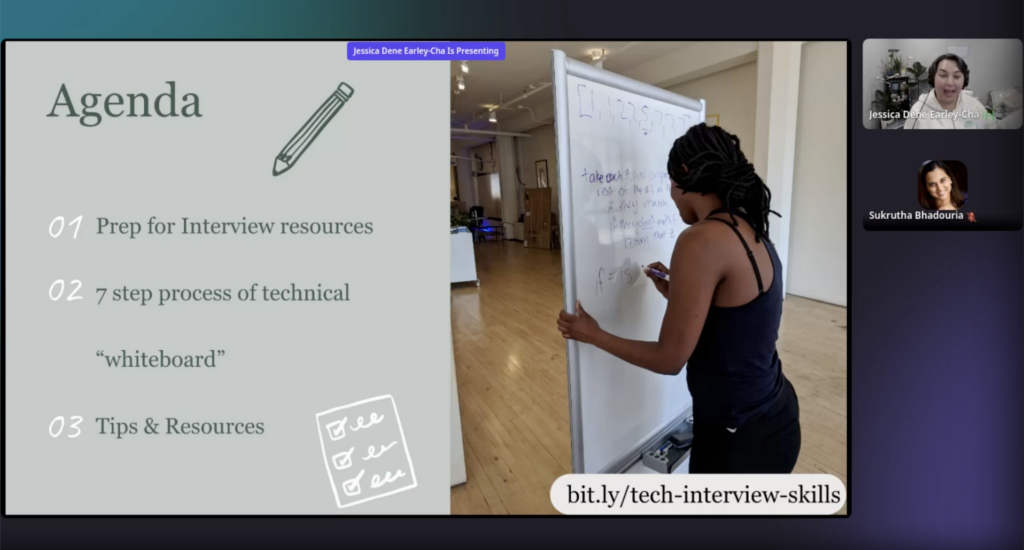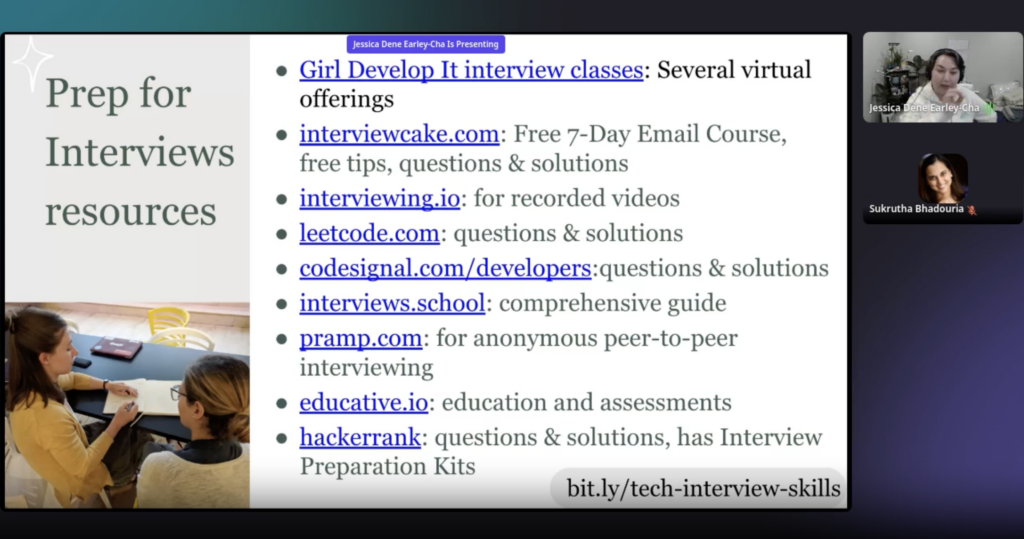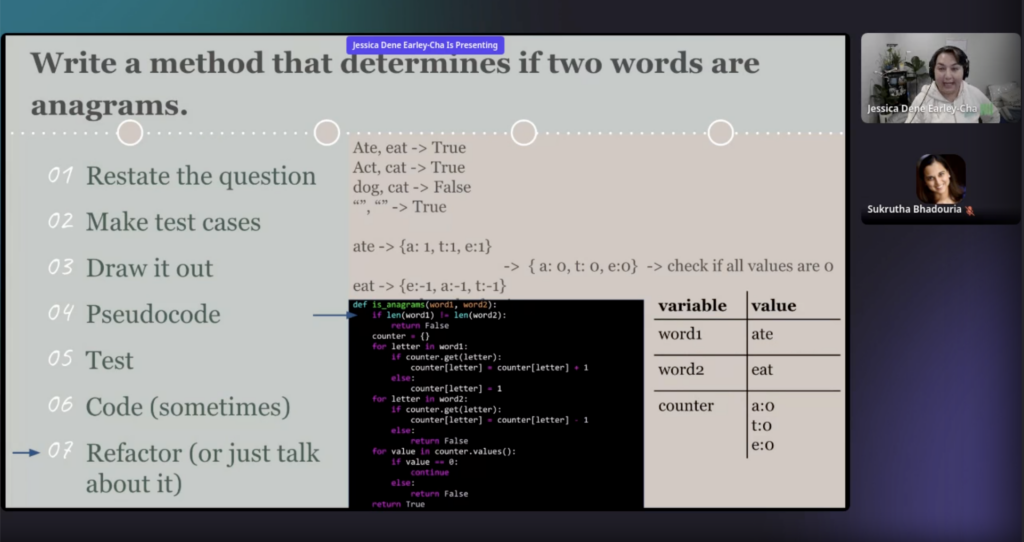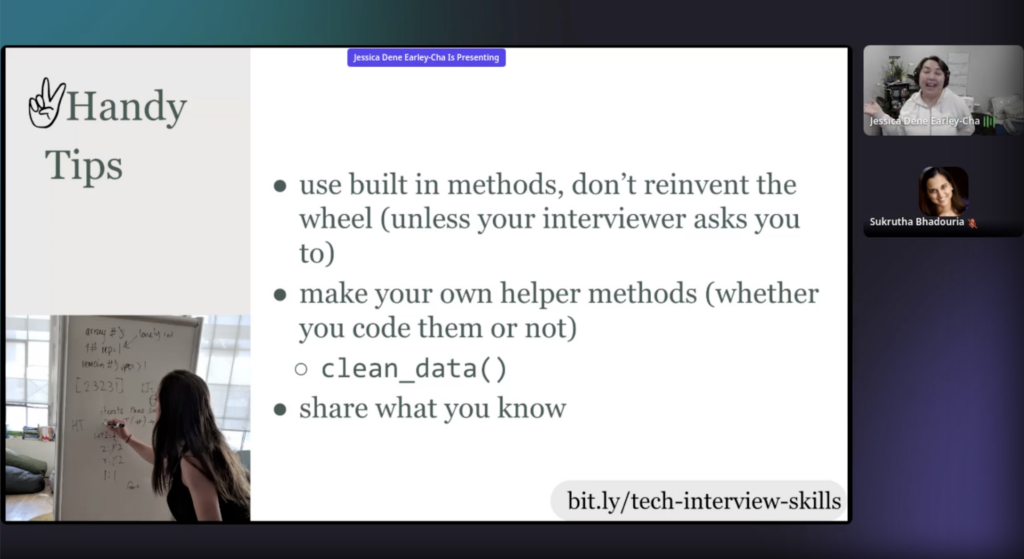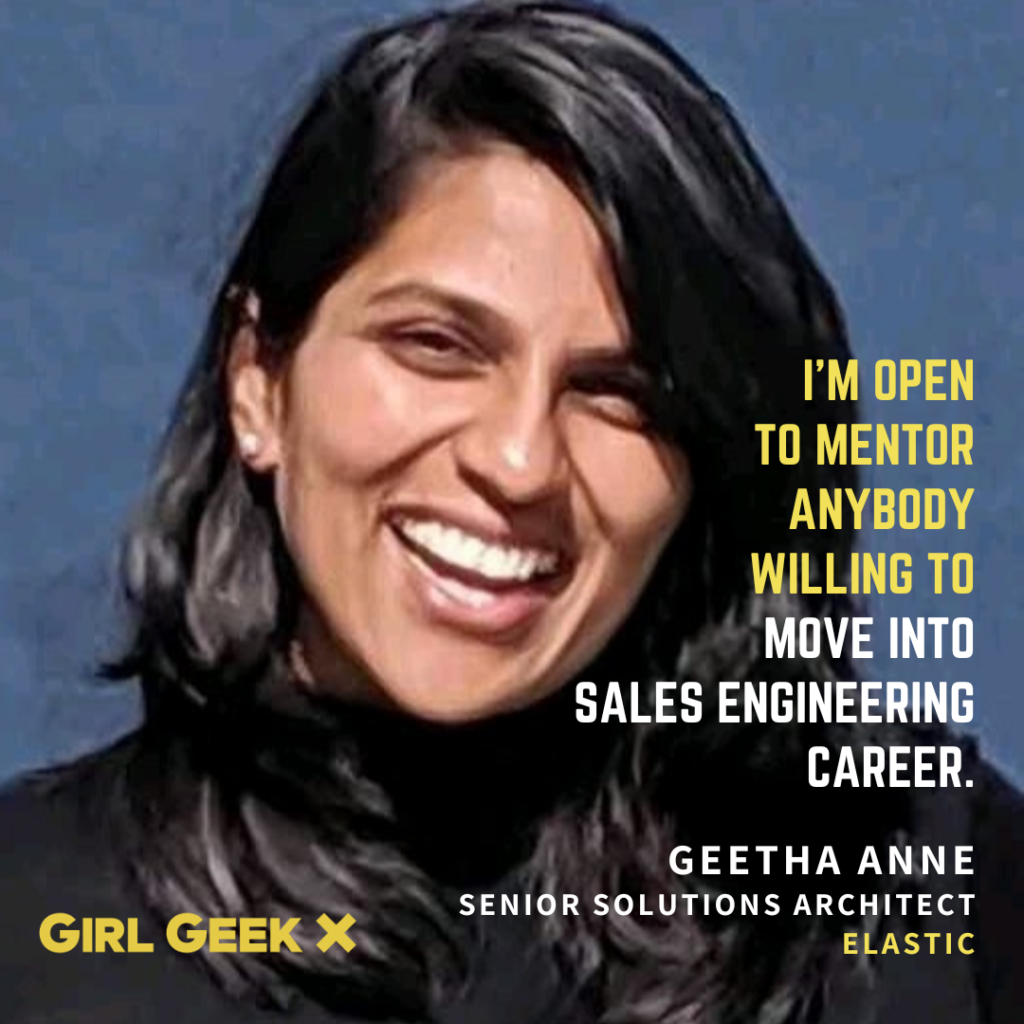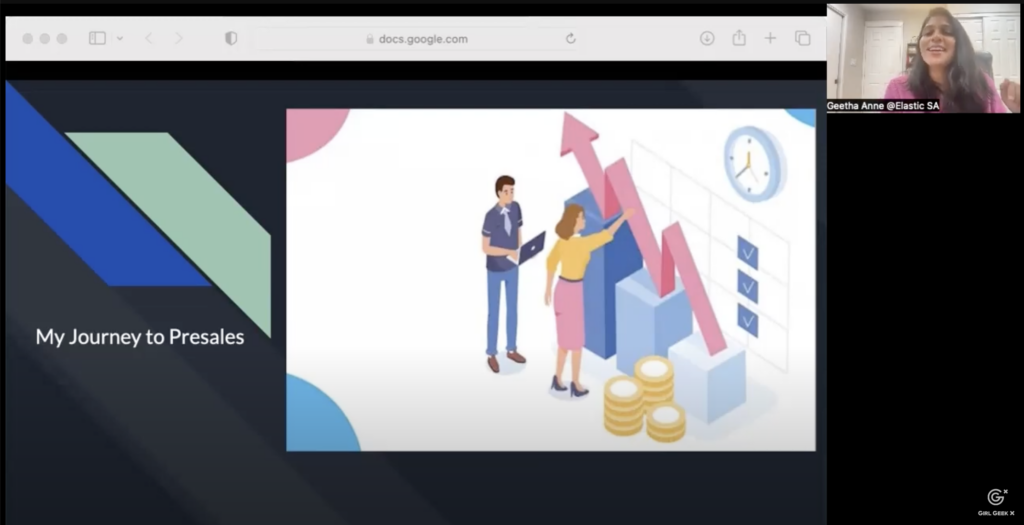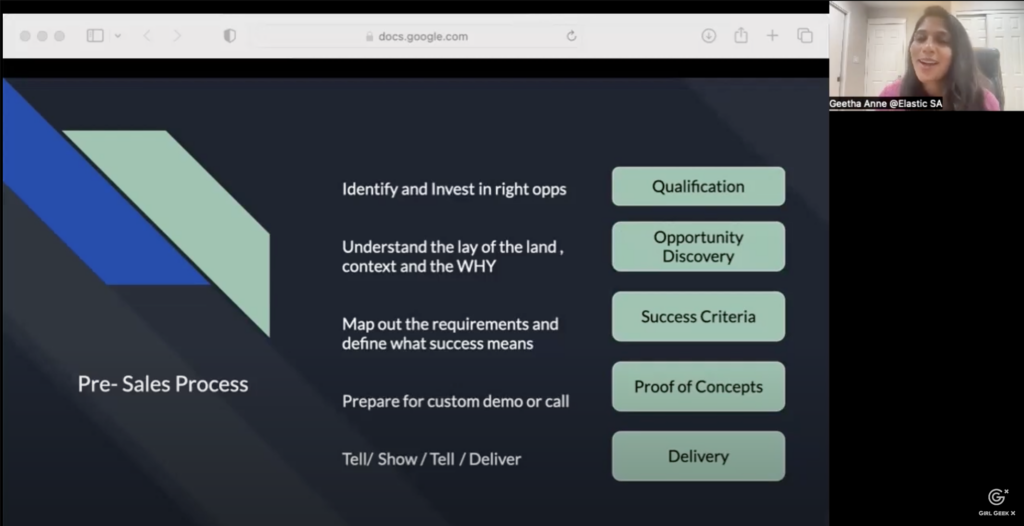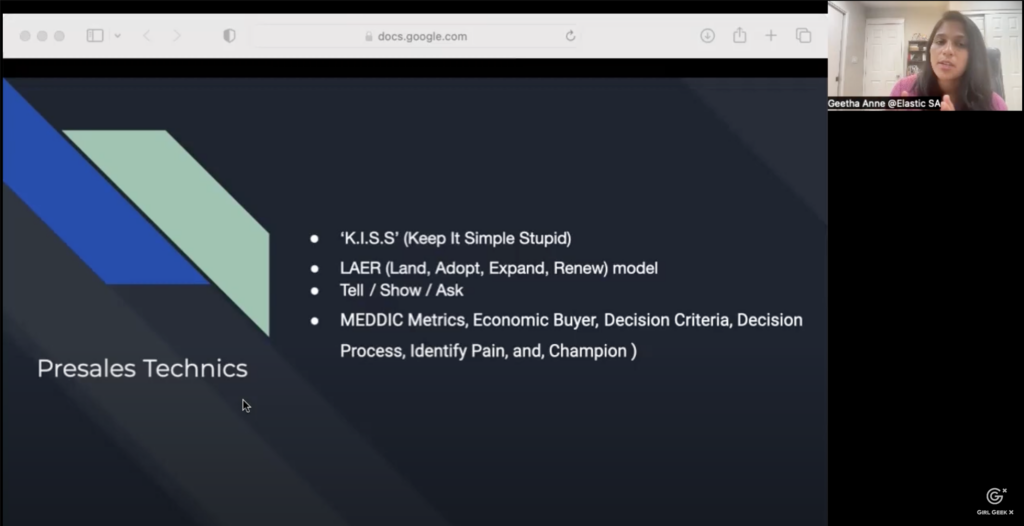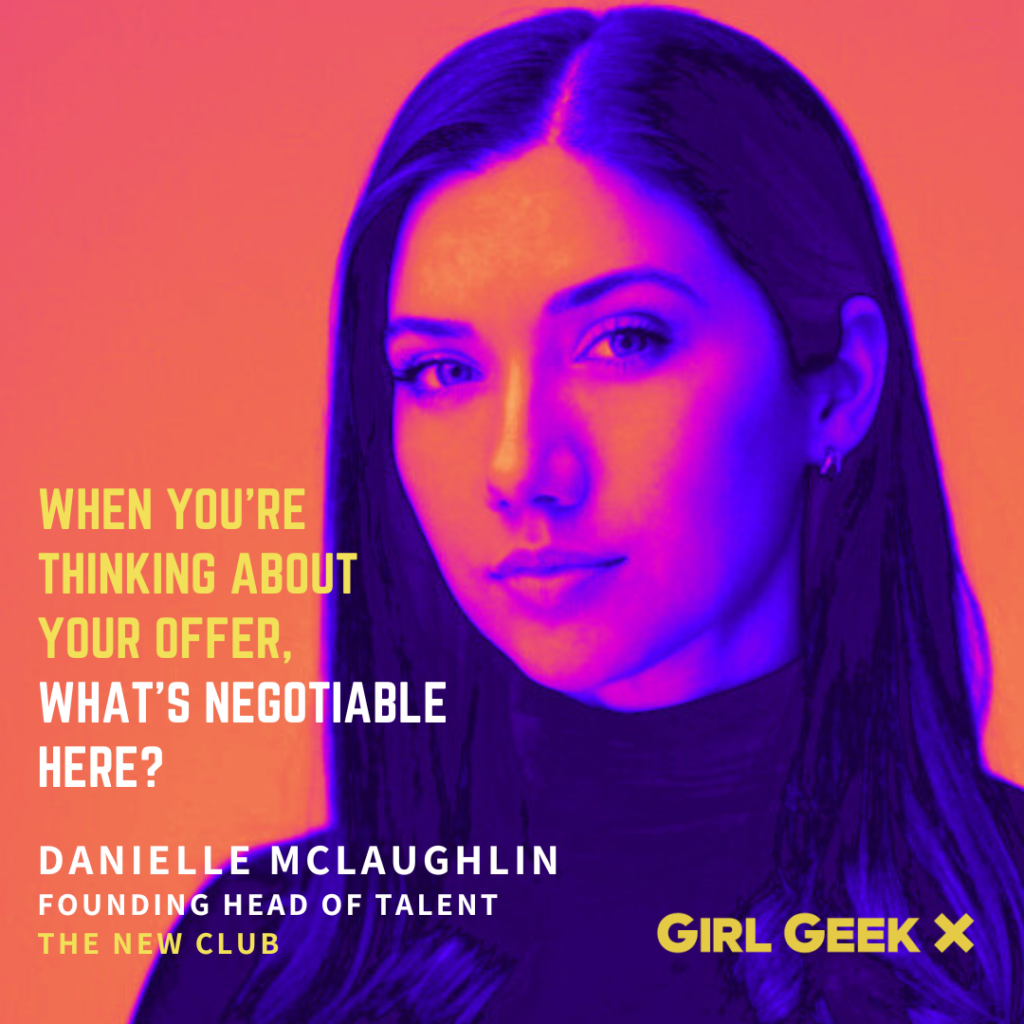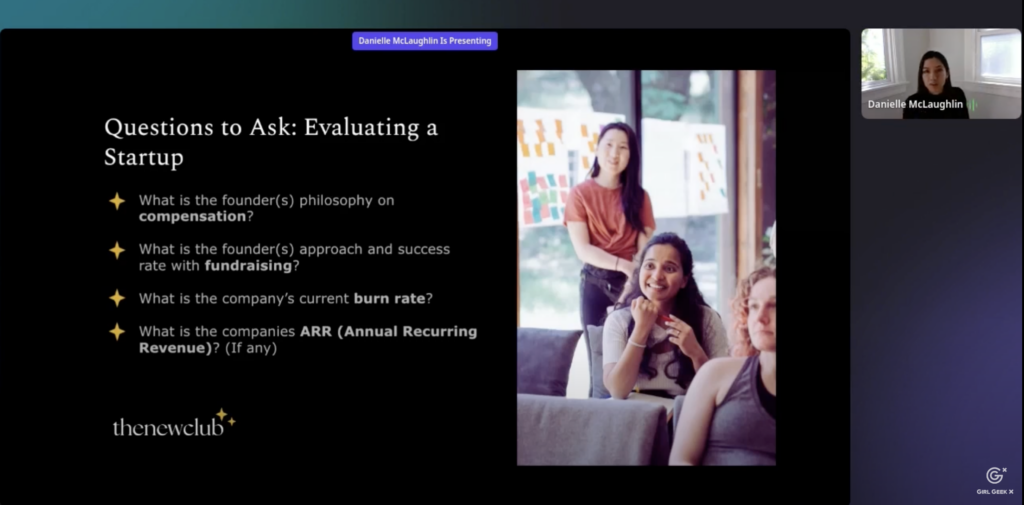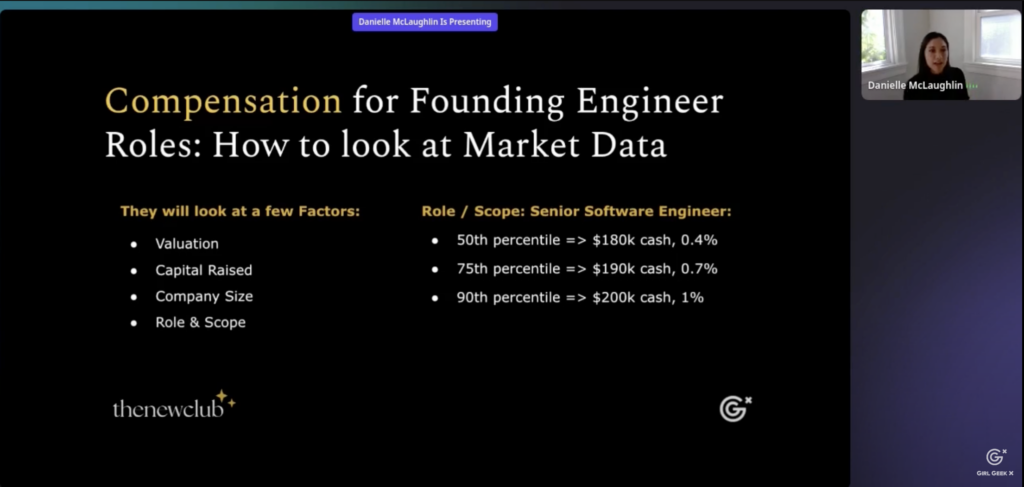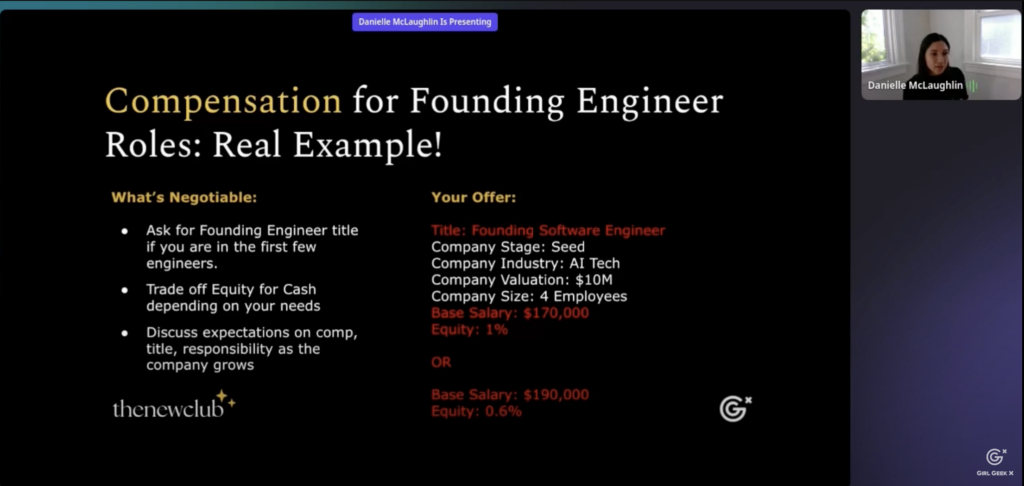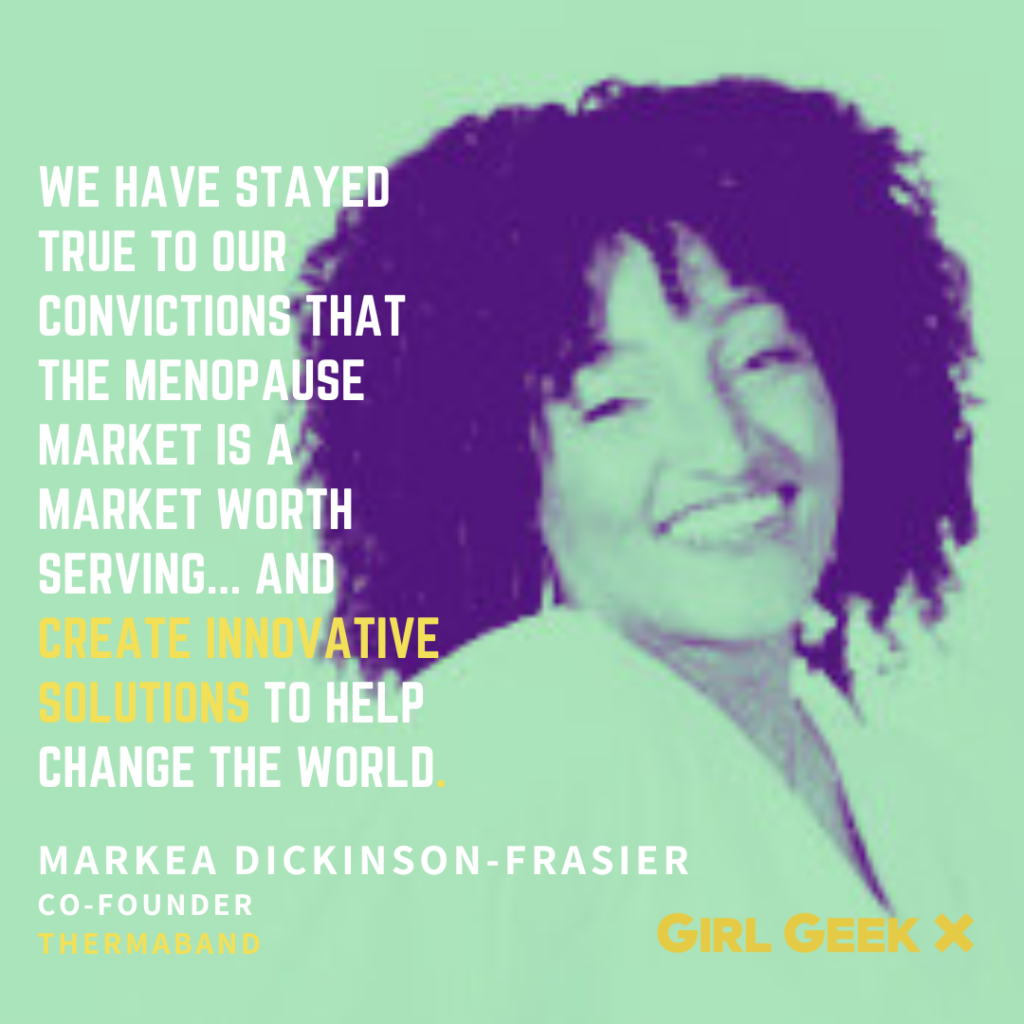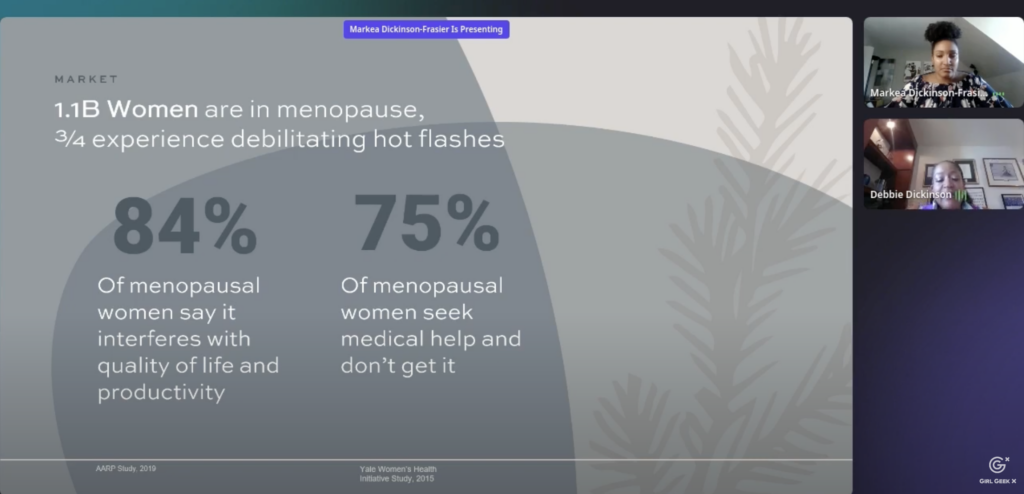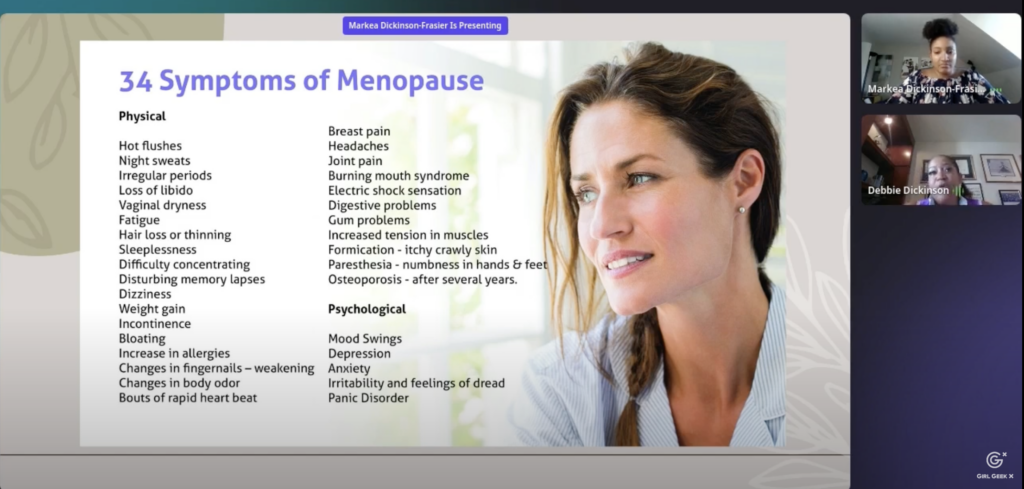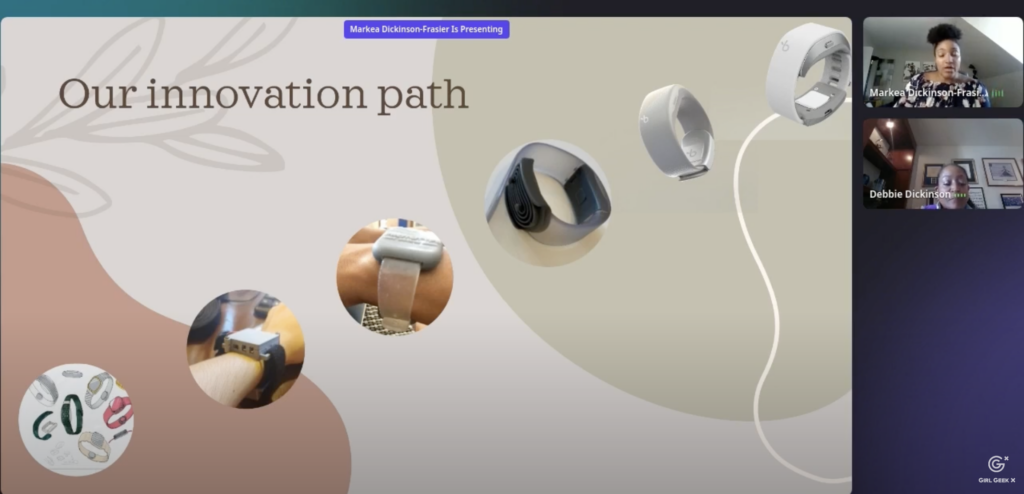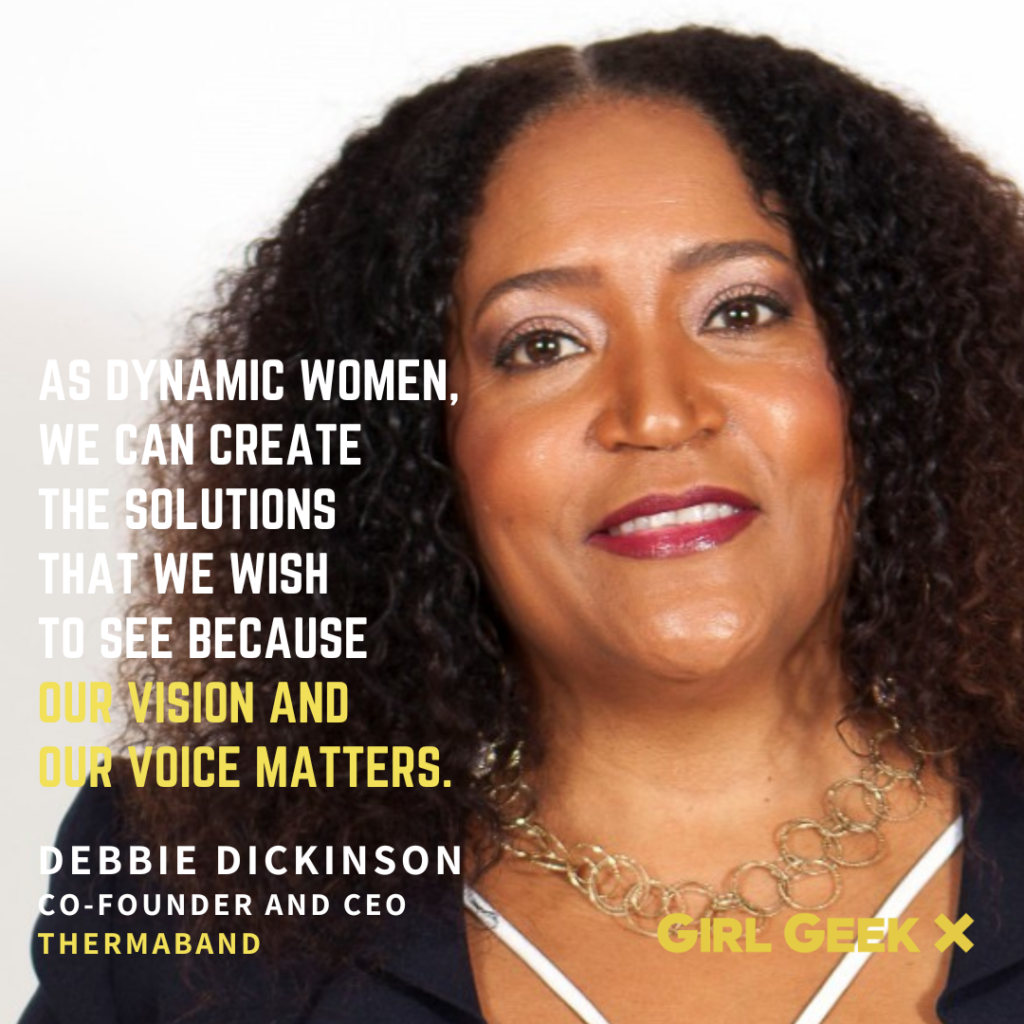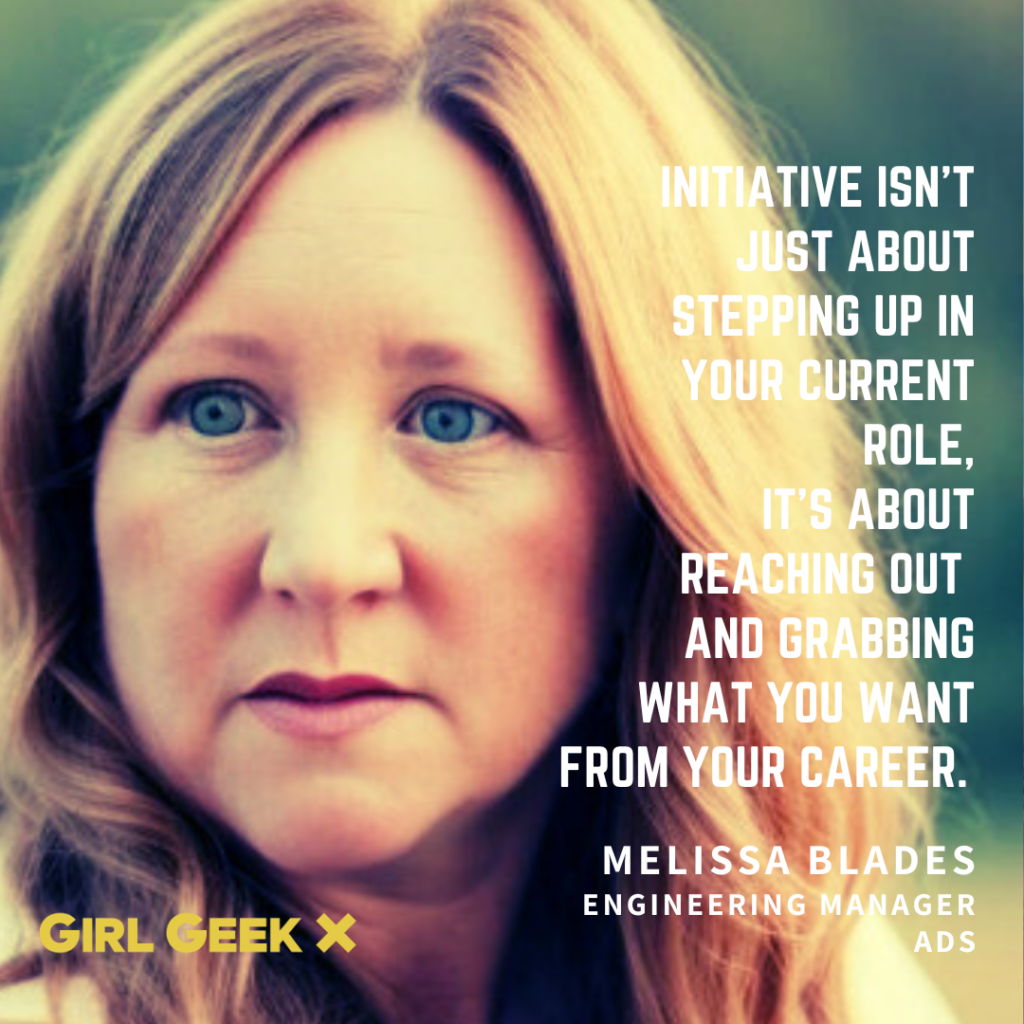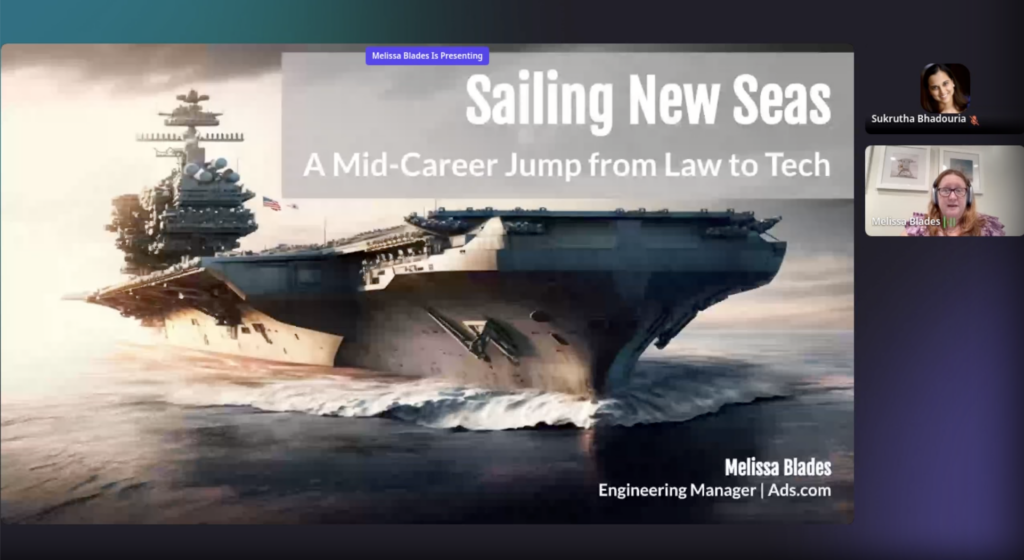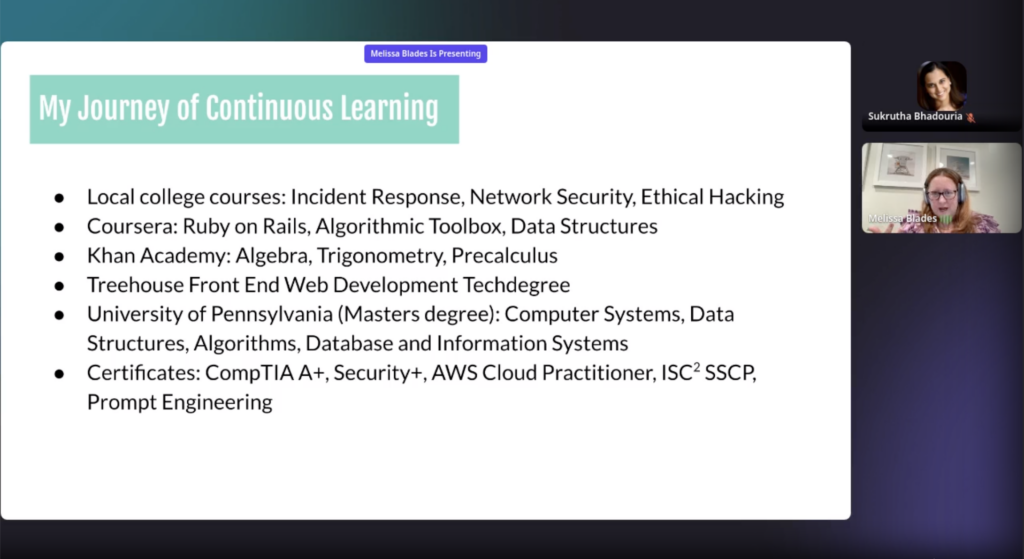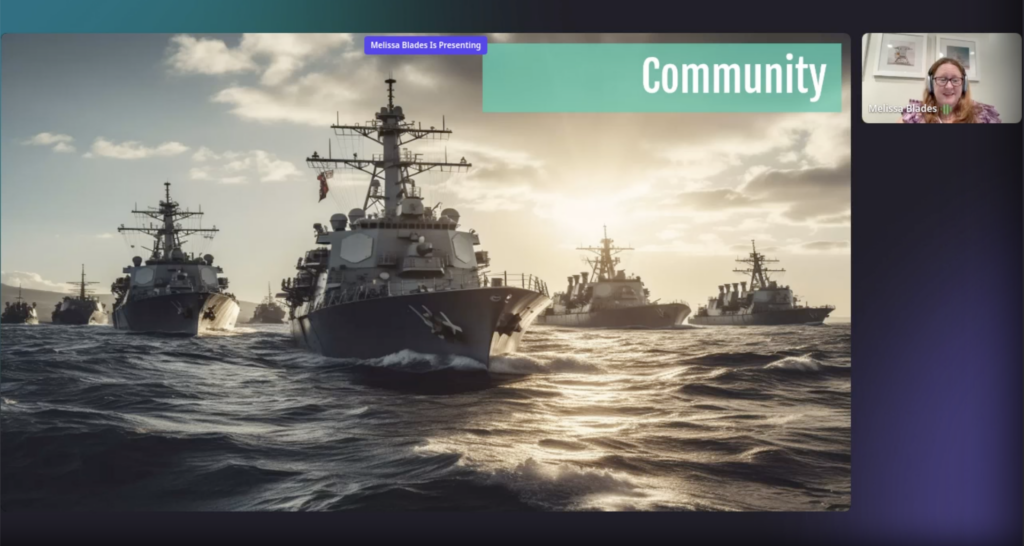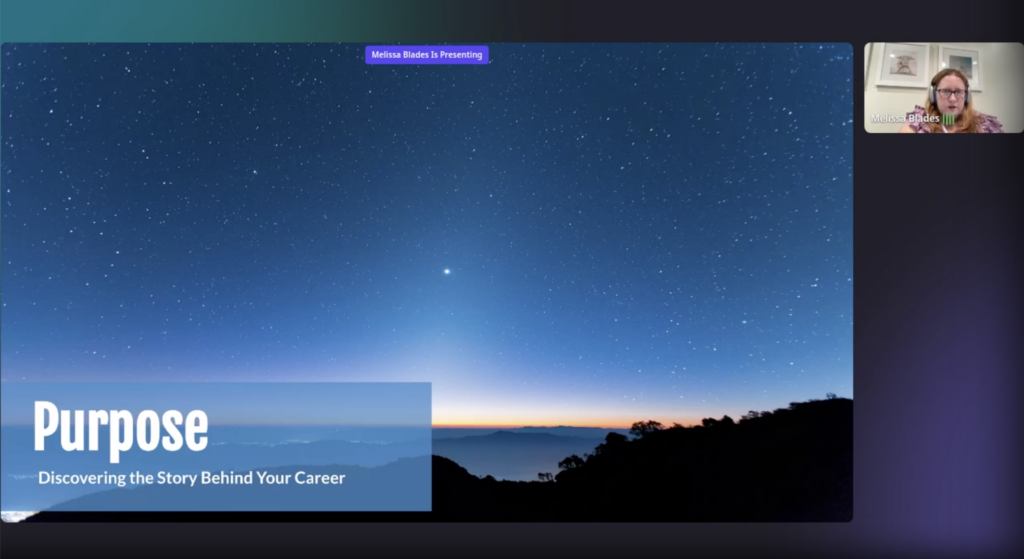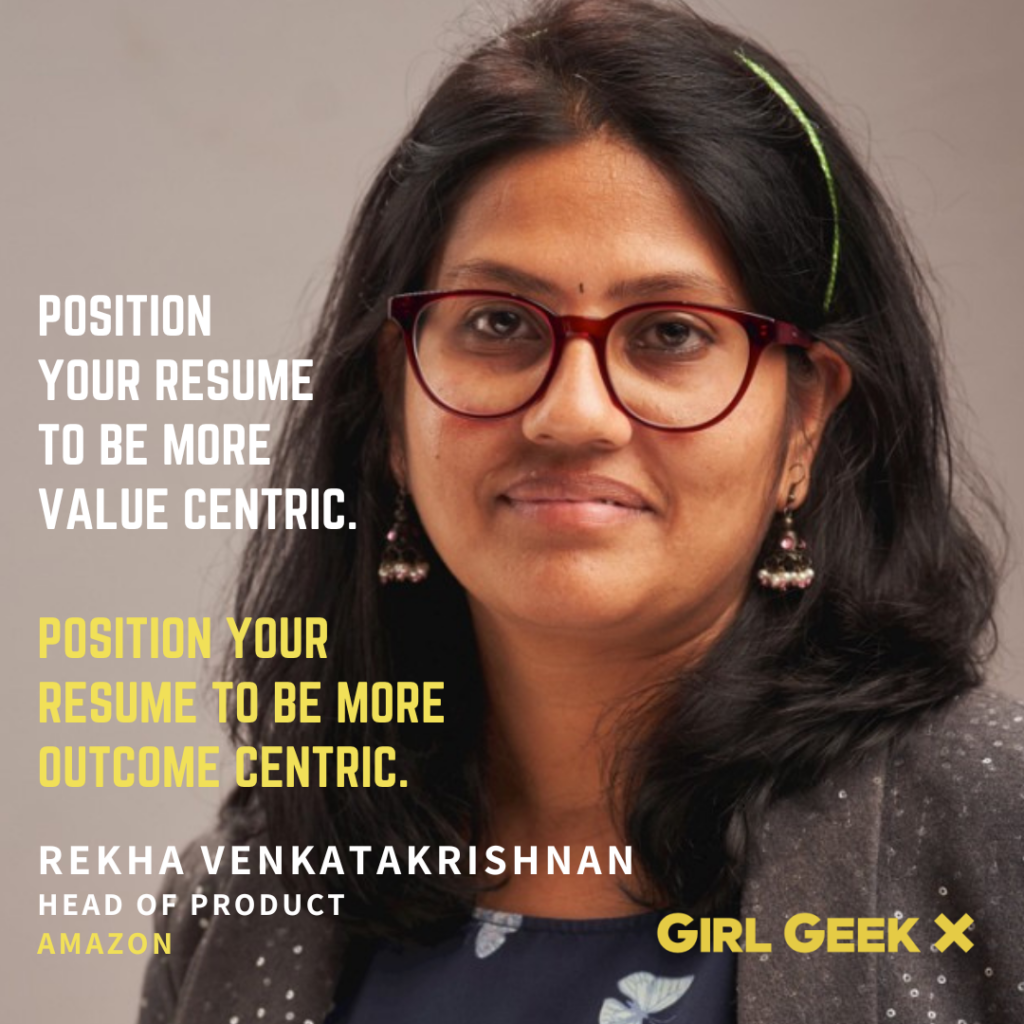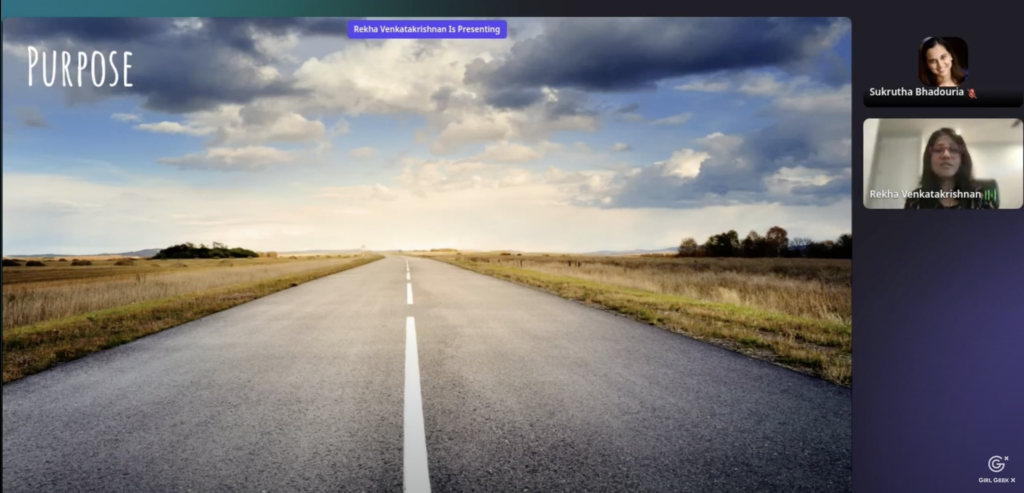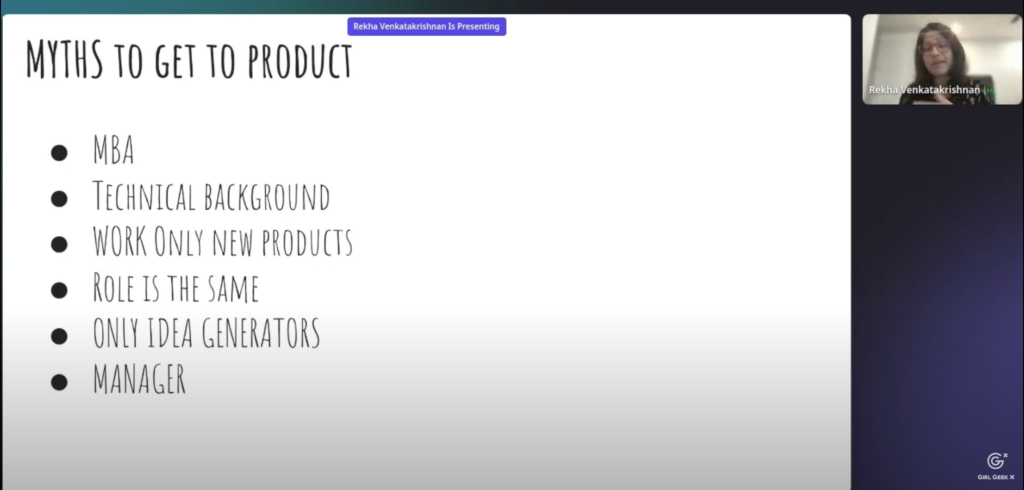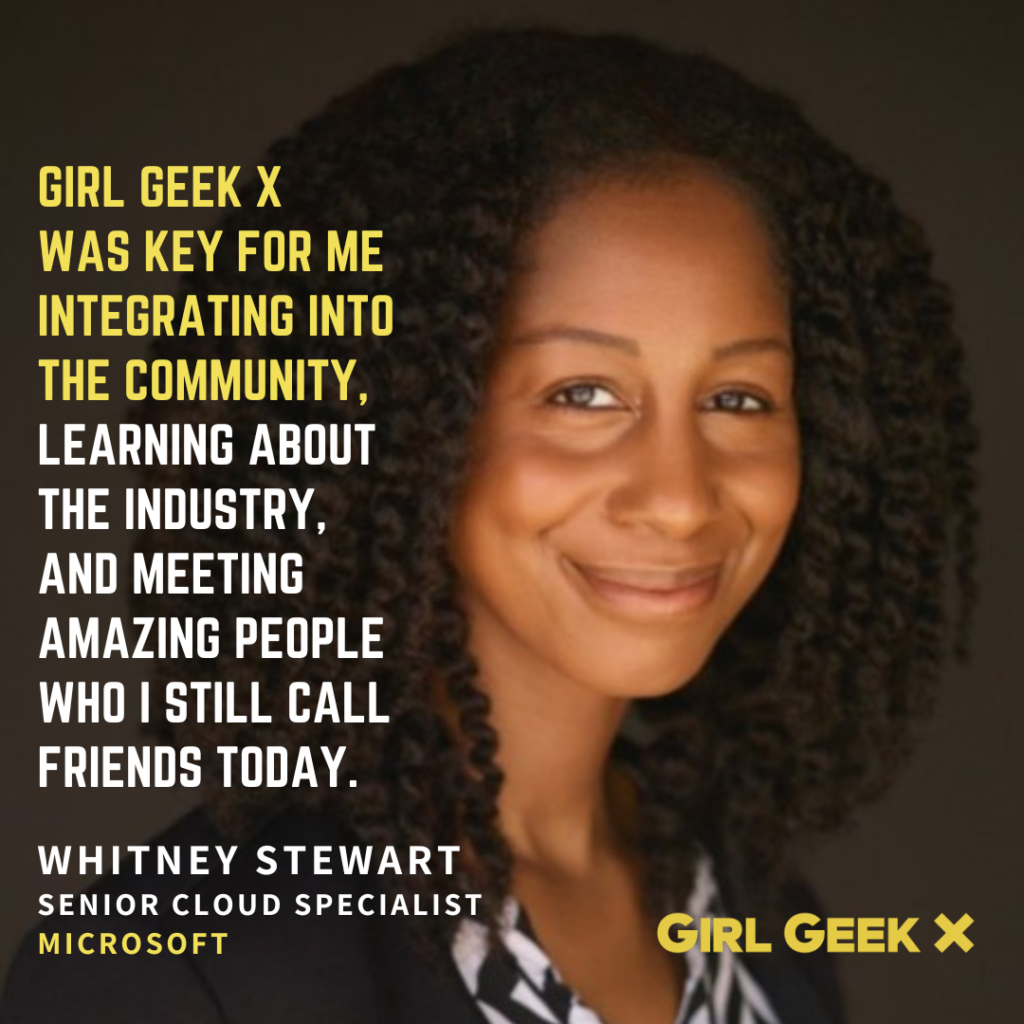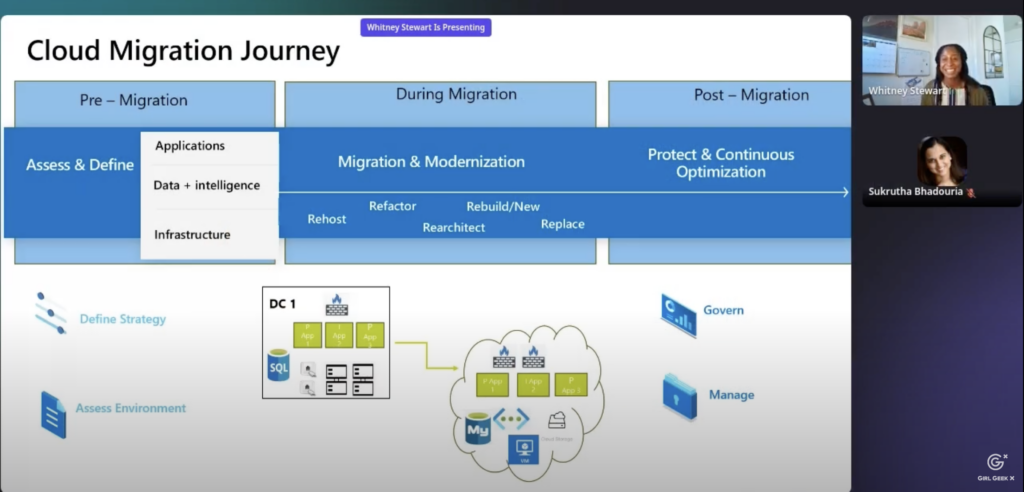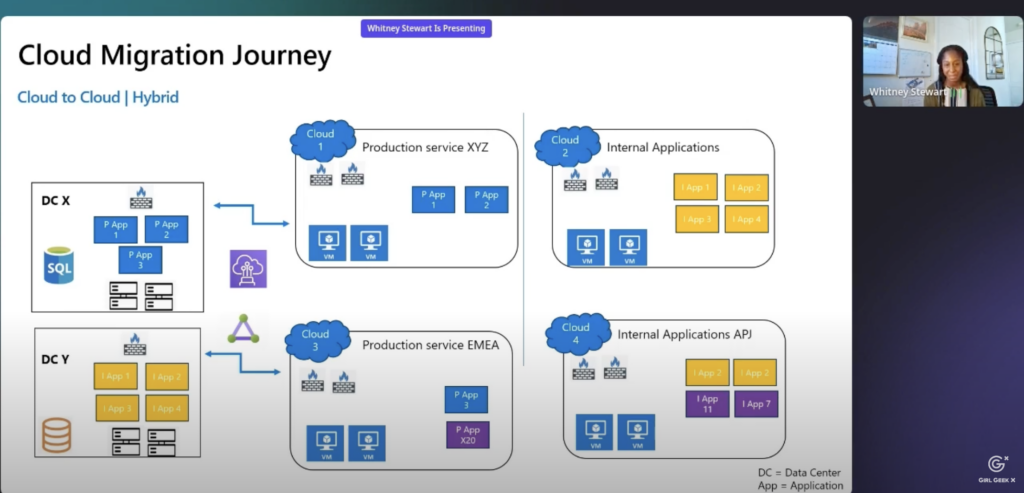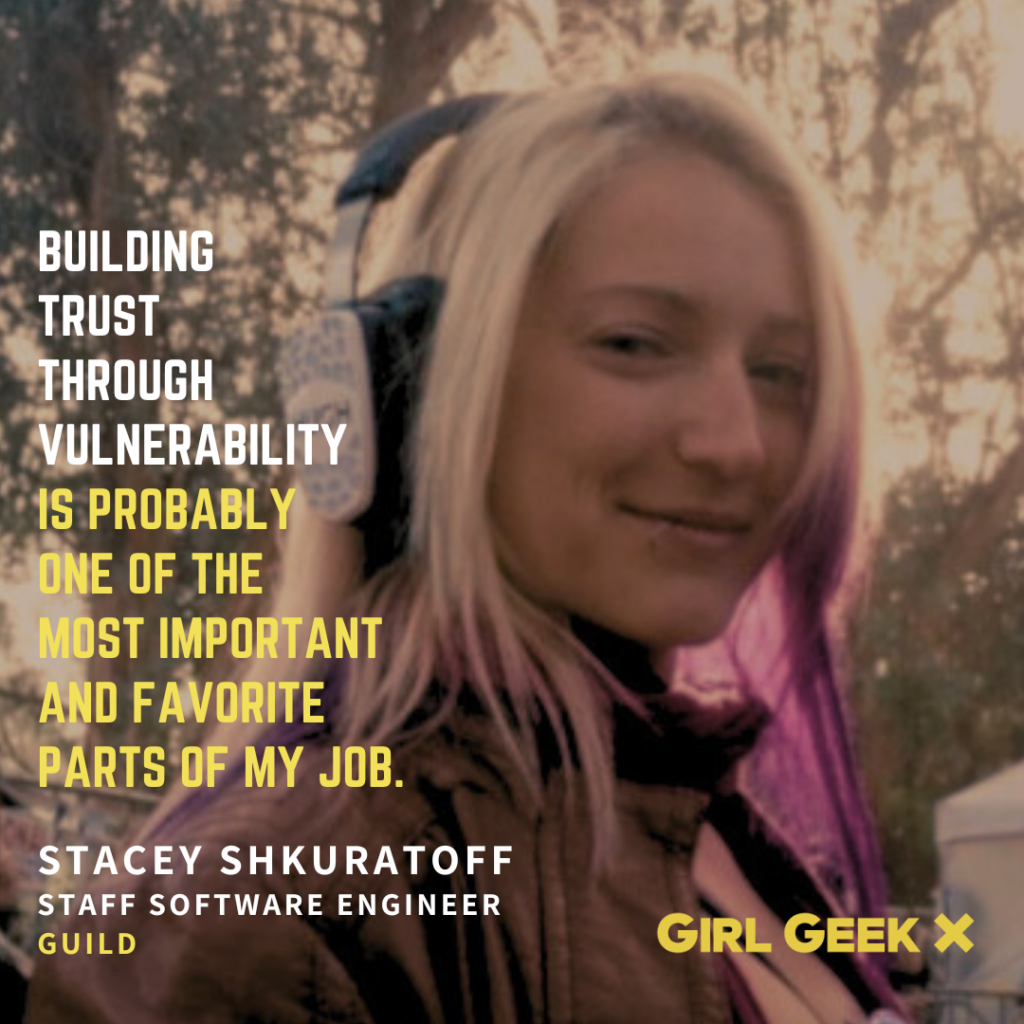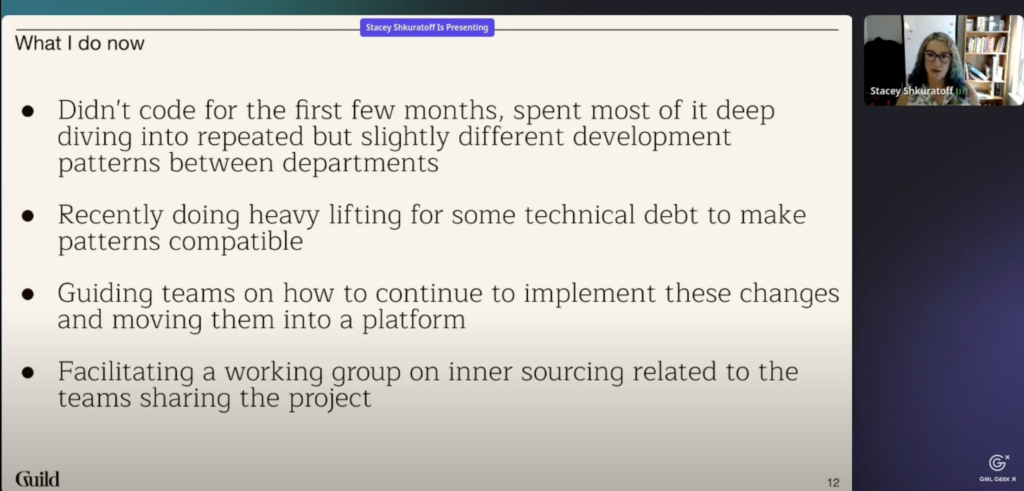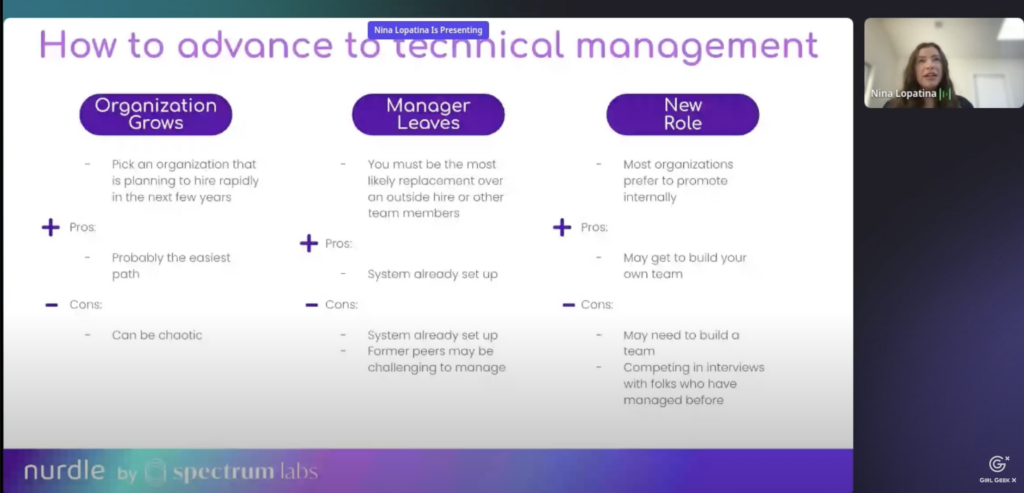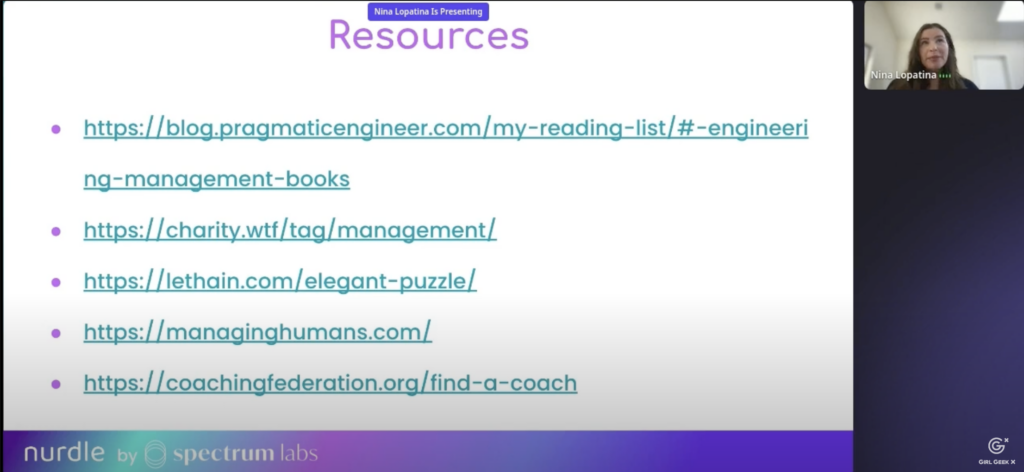Elevate conference keynote speaker Lakecia Gunter shares her personal journey in tech and the importance of building supportive networks. She highlights the impact of leaders who believed in her and invested in her career. Gunter emphasizes the need to say yes to opportunities and cancel self-doubt, and encourages attendees to reflect on their vision, seize opportunities, take action, and build relationships.
Transcript:
Angie Chang: Welcome to the Winter Elevate Conference. My name is Angie Chang. I’m the founder of Girl Geek X, formerly known as Bay Area Girl Geek Dinners where we hosted over a decade of Girl Geek dinners in the San Francisco Bay Area and over five years of virtual Elevate conferences where we’ve created opportunities to give even more women the mic on stage. So thank you for joining us. Every quarter, we’ve been gathering over a thousand women online for career and tech talks, networking first annually on International Women’s Day and now quarterly at Elevate virtual conferences. And this time we have added two mentorship hours in the mentorship lounge, which people are just coming in from. We just started that in this fall and we found it to be a great success for having dozens and dozens of women experts in tech, AI, LLMs, data science, non-coding roles in tech, volunteering to share their expertise with women in tech online around the world.
So thank you so much for all of the volunteers who’ve just joined us from that mentorship lounge and that mentorship lounge is a place where we hope you make connections at people on LinkedIn and stay in touch. There is a second mentorship hour that will be happening at 1:00 PM Pacific Time and you can visit the mentorship lounge to meet even more mentors. It’s a different set of mentors, so I encourage you to go look at the list of mentors will be joining us in the afternoon and the Girl Geek X team will be in a booth in Elevate on this platform. So if you want to meet us and talk about potentially sponsoring one of our virtual events or hosting a Girl Geek dinner at your company, head over to our booth to meet the Girl Geek X team and ask any questions you have about potential partnership or sponsorship.
And we have a participation leaderboard going today. So you’ll be rewarded for what is it, putting little emojis in people’s sessions, cheering them on, messaging each other, asking questions. So please show our speakers some love during their session. You can also schedule meetings with fellow attendees in this air meet software by using the attendees search bar to browse profiles or click on someone’s name in the chat or at a table in the mentorship lounge. And at the end of the event, the top three folks on our leadership board will get a Girl Geek X swag bag of cool stuff. So if you’re one of our top participants today, you get really cool stuff, so encourage you to participate. One of the things that we did in the pandemic when education was disruptive is we began volunteering with the East Oakland School in partnership with a nonprofit called the Oakland Public Education Fund.
And if you happen to be in the area, you can join us in Oakland or you can sign up to volunteer through Tech Link, which is a virtual or hybrid mentorship program with the East Oakland Public School. It happens Fridays in February through April, and as I said, it’s virtual but with the option to go in if you would like to, and you can sign up for that and find out more about that at our website @girlgeek.io or in our weekly newsletter. And this is the third year that we’re partnering with this nonprofit to bring our professional network of women and allies to the local schools to provide a helping hand for educators and introduce students to role models. As you know, probably in our lives we didn’t have that great role model working in tech to meet us when we were in high school or junior high school. So it’s really a great opportunity to help be that role model that you always wanted in your life. And if given our current economic climate, if you know someone who’s looking for a job, we do have some job listings at our website @girlGeek.io/jobs. There’s a diverse set of remote and hybrid roles from some of our partners this year. I’m going to hand it over to Amanda.
Amanda Beaty: Hi, my name is Amanda Beaty and obviously I’m used to being in the background here at Girl Geek X. I do things like social media and working on YouTube videos. Our co-founder Sukrutha is usually here in this spot, but she’s unable to join us today, so I’m filling in. Today we will be hearing from a diverse set of women working in tech from executives to individual contributors. We love hearing from women about their unique expertise and inspiring stories, all the cold job titles and incredible passions and values. Hopefully our speakers will inspire you to do that hard thing that you wanted to do or help you think differently about something. We’ll be learning so much today and we encourage you to help us amplify and elevate the incredible takeaways our speakers will be sharing with us today. If you want to share on social media, please tag Girl Geek X and use the hashtag #ElevateWomen.
All of our talks are recorded and put on our YouTube channel later. You can also immediately hit replay in this air Meet platform after the session ends, so you can re-watch this later today or later this week. So if you’re interested in speaking, 95% of our speakers today submitted speaker submissions on the Girl Geek X website to speak here today. You can go to our website, girlgeek.io and go to the speak at the top of the menu and just click apply to speak at an upcoming Elevate conference. Our next one is in March on International Women’s Day, and then we’re doing this quarterly for the rest of the year.
So we’re also looking for sponsors who are hiring women in tech to partner with us to showcase their top leaders and talent to put more technical women leaders on stage and create more role models. If your company is invested in hiring diverse female talent, come visit us in the booth later today that Angie mentioned earlier. And now Angie’s going to introduce our keynote speaker for the day.
Angie Chang: Yes, so our keynote speaker today is Lakecia Gunter. She is the chief technology officer for the Global Partner Solutions Organization at Microsoft. GPS is the largest partner ecosystem in the industry, empowering partners to drive digital tech transformation. And prior to joining Microsoft, she held several leadership roles at Intel Corporation, including technical assistant and chief of staff to the CEO, as well as vice president in the Programmable Solutions group. You may remember her from Intel Girl Geek dinner in 20 27, 20 17, and today we are excited to welcome our keynote speaker. Welcome.
Lakecia Gunter: Thank you Angie and team. “You may write me down in history with your bitter twisted lies. You may trod me in the very dirt, but still like dust, I’ll rise. Does my sassiness upset you? Why are you be set with gloom? Because I walk like I got oil wells pumping in my living room? Just like moons and like suns with a certainty of tithes, just like hope springing high still I’ll rise. Did you want to see me broken, bowed head and lowered eyes, shoulders falling down like teardrops weaken by my soulful cries. Does my hotness offend you? Don’t you take it awful hard because I laugh like I’ve got goldmines digging in my own backyard. You may shoot me with your words, you may cut me with your eyes, you may kill me with your hatefulness, but still like air, I’ll rise.”
I love this poem by Maya Angelou. It is one of my absolute favorites, and if you’re like me, when you hear this poem, you imagine, no you remember the obstacles that stand in the way of women rising. It can be so difficult at times. In fact, I often reflect on my own journey and think you should not be here because the odds of becoming a vice president at Intel, a CTO at Microsoft and a corporate board of directors member at IDEX Corporation seemed insurmountable. But as Maya says, “still, I rise. Still, you rise. Still, we rise.” My intention today is to inspire you to think about the ways you can be a force for blazing a trail for sisters around you and those coming behind you so that as we are leading, as we’re moving forward, as we are rising together, we can lift others to rise with us to lift as we climb.
Good morning. I’m Lakecia Gunter, as Angie said, and I am so elated to be here with you this morning. I don’t take this opportunity lightly to connect with amazing women in this room, in this virtual environment on this call. It’s an absolute pleasure and as Angie said, I’m no stranger to the girl Geek community. I love the Girl Geek community. It’s so empowering and supportive of women. So Angie, thank you. Thank you to you and your team for your passion, for your focus on increasing the number of women leading at the highest levels in tech. My hope is that one day very soon, the rooms in the tech industry will be overflowing with women and I believe with each of us working together, we’re going to make that happen. There’s no doubt about it in my mind. I cannot believe it, but we’re less than 30 days away from 2024?
Can you believe this ladies? 2023 has flown by, I don’t know about you, but I’m determined to make 2024 my most transformational year yet. How many of you guys agree our most transformational year yet? No matter what you faced in 2023, we know at times, it can be so challenging, but remember, you are resilient. You are an overcomer. I want you to know that there’s no obstacle, no setback, no mountain that can prevent you from dreaming those big dreams and achieving what others may think is impossible. And when we support one another, we are an unstoppable force. I know this firsthand because I’ve experienced this in my life. If I’ve done anything right along this journey, it’s been connecting with the right people at the right time, building strong supportive networks, supportive relationships has really been the key to my success. It’s what I call my secret sauce.
I’m excited today to really just kind of walk you through my story and my journey into tech and my journey absolutely began in a small town in Florida. Yes, a small town in Florida called Hane City. It’s right outside of Orlando. Our claim to fame was being one of the top producers of the most delicious oranges in the state and being right next door to all those theme parks that we love to visit in Orlando, like Walt Disney, universal and the likes. I was raised by a strong and equally amazing single mom of three who had a heart of gold age, supportive grandparents and a phenomenal family and a community that really looked after its own. I was surrounded by faith, love, strength, and unity. My mom instilled in me the value of hard work. She set an example of how to stay vigilant in the face of adversity, never allowing challenges, which they came in life or in the environment to dictate how her life story would be defined, and she made certain that it wouldn’t take mine early in life.
I discovered my love for computers and I have to tell you, my mom certainly encouraged me. One year, she worked extremely hard to make certain that I could get a computer. She worked extra shifts to make sure I could buy my very first computer for Christmas or she could buy my very first computer for Christmas, let me just say that it was her buddy, but it was a Commodore 64. I know I’m taking some of you guys way, way back. How many of you guys remember the Commodore of Vic 20, the Commodore of 64? Am I by myself in this Ataris? You remember ladies, but that was one of the best Christmases I’ve ever had. My mom was my biggest cheerleader and she never missed an opportunity to show me. She always invested in me in my future, equipping me with the resources, the tools to achieve my wildest dreams.
That was my mom. I love this quote by Marilyn Monroe. It says, “Give a girl. Give a girl the shoes….” Excuse me. “Give the girl right shoes, and she will conquer the world.” And in my case, it was more like give the girl the right computer and she will conquer and travel the world, and I did. For me, age 12 was just the beginning. I never could have predicted what was coming next. It has been a whirlwind. I had been so extremely blessed with a phenomenal career and the opportunity to work for so many different companies. That deep love for computers would take me from that small town in Florida to some of the top universities in the country, University of South Florida, in Tampa to Georgia Tech and provide me with the opportunity to work with some of the best companies on the planet, top Fortune 100 companies I’ve been able to work for in my career.
As Andrew said earlier, currently I’m at Microsoft. Like some of you though, my very first job was at KFC. How many of you guys remember that fast food experience? Was it just me? I don’t think so. That’s where I got my start. Mr. And Mrs. Tinsley, entrepreneurs in my hometown, African-American entrepreneurs at that they owned the franchises and one of them was a KFC. They spotted my promise as a young team, and hired me as a lobby hostess at age 14. I had my first job making my own money. By the time I was a senior in high school, I was assistant manager, working with my peers, working with my classmates, I was making my own money and contributing to my family’s success. There was no greater feeling than that. This opportunity was so meaningful to me. It really made a huge difference in my life and the life of my family, and this was my very first experience of being lifted up.
As I reflect on my career journey, there’ve been several people that made a huge difference in my career. And on the screen, you see a couple of them, these leaders really invested in me and I know that my career journey and any success that I’ve achieved has really been because of these men and women who believed in me. They invested in me, they empowered me to pursue my dreams and goals. More importantly, they put themselves in my shoes and remembered what it was like when they first got started in their life and in career. And as I said earlier, being in tech can really be hard without the support of community, including managers and senior leaders. I know for me, one can feel very alone in Fortune 50 companies with over a hundred thousand employees with very few women and people of color. I want to highlight three leaders who changed my life and career trajectory.
The first Bob Swan, former CFO and CEO of Intel. Bob was always a huge support for me in my career. As Angie said, I had an opportunity to be chief of staff and technical assistant to Brian Krzanish, the former CEO of Intel. And Bob was CFO at the time and I would never forget, he always made me feel like a leader on the team, like a part of the management committee. One time I put together a leadership offsite and it was a two-day offsite and it was just a lot of great work around strategy, team building and the likes, and we were done. It was the end of the day, we’re actually in the jet center about to head back to Santa Clara and he came up and he put his arm around me and he said, Lakecia, you make us better. Wow, that touched me so deeply in my heart I felt like, wow, he sees me.
I’m adding value to the team. I will never forget that moment in my career ever. And Bob continued to be a major supporter for me in my career. So much so that when I was interviewing for him for a board opportunity with Idexx, he was one of my references and he was so excited to be a reference for me. He said, Lakecia, I just talked to Igon Zender and let me just tell you, you’ve got this, so proud of you. It’s a done deal. And of course I did get the board seat, and so he’s continued to be a shining light, a bright light, a mentor, a sponsor, even until today. He saw me, he recognized my value, he recognized my impact, and he has continued to enable my growth and my success. I’m so grateful for that. The second picture is Rodney Clark. Rodney recruited me from Intel to join Microsoft.
And what I loved about that opportunity is that he said, “Lakecia, not only am I hiring you for a job, I’m really sponsoring you into a career at Microsoft.” That meant the world to me. It wasn’t that, hey, I’m just looking for someone to fill a spot. No, I’m looking for someone that can grow their career at Microsoft and someone who I believe has a long trajectory at Microsoft. So grateful for Rodney. Every year he made certain that I was growing. He made certain that I had new opportunities with bigger scope. He believed in me and my potential to achieve at the highest levels. Such an amazing leader, so empowering, one of the best. And last but certainly not least, the beautiful face on the slide is Pamela Lusardi, affectionately, we called her Pete. Pete hired me into Intel in 2008. She was a 27-year Intel veteran and a phenomenal leader.
She believed in me from day one ladies, she told me, so Lakecia, you and I we’re going to change the world of of silicon validation of intel. No doubt about it. We’re going to be the dynamic duo. The first few days on the job, she said to me, Lakecia, you have to make this a hundred thousand person monstrosity at Intel seem like a family. You’re going to have to. You need to make sure you create that very small, tight-knit community or more importantly, she said, you won’t make it because that’s been her experience. She said, “I want to help you build your Intel family.” So let me tell you what she did. The first few days on the job, she said, “You’re going to kill this job. I’m not worried about that.” But she gave me her Fab five or her fave five, whichever you want to call it.
She gave me five women in her network to go and meet. She truly embodied the #Liftherup. She is me. I am her. That’s what Pete did the first week on the job. She absolutely had a vision for my career. There was no doubt about it. We met every week, strategize for the week ahead, put our game plan together. We were just in lockstep making changes in validation, changes that were really well received. And one of my weekly one-on-one conversations after I had been on the job for about six months at this time, it was March 31st, 2009, I’ll never forget, she began to share a vision for my career at Intel. She said, “You can become a technical assistant and chief of staff for one of Intel’s c-suite leaders.” My first thought was, wow, this is awesome. And my second thought is, but what is that?
I had no clue at the time, I’d only been in the company for six months. I had no idea. She said, also, you can become one of Intel’s rock stars and I’m going to help you do both. Ladies, let me tell you, I was in tears in the room. I never actually cried in front of my manager, but I was in tears because I’m like, wow. I never had a leader see me that way and I never had a leader tell me, here’s where your future is and here’s where I’m going to get you to together. We’re going to do it. Not only was Pete a smart, beautiful country girl, she loved family, she loved farming and she loved animals. Dob Lewis was one of her charities that she absolutely enjoyed serving and spending time and donating her dollars to. And guess what? She was a licensed pilot.
She owned her own plane. She loved flying and many times she would actually fly her plane to work. Yes, my boss flew her plane to work. She would park it in the Hillsborough airport hangar right down the street from Intel and she would ride her bike to the office. She was so cool. I called her a pint-sized powerhouse. We adored Pete. On April 1st, 2009, the next day after our one-on-one again the night before, she shared with me her plan for my career and what we were going to do together.. The next day, what was April fools day, I’ll never forget, we actually got news that we were not prepared for. Pete’s plane had crashed on the way to work.
I remember looking for her that morning. She was supposed to be in the cafeteria with her manager and it had been raining that day, very rainy. And so we thought, well, she doesn’t fly her plane in the rain, so she’s probably driving. She was a little bit late, but unfortunately her manager confirmed that on the way to work, her plane had crashed. I lost my career best manager at that time. And so Pete’s impact on my life has been phenomenal, is tremendous. There isn’t a day that doesn’t go by that I don’t think about her and what I learned from her in those short six months. And so I dedicate this talk to her. I really do. She absolutely was amazing. And as I said, one of the most important things that she told me to do when I first started at Intel is to make sure that I build my network.
And so Pete’s wisdom continues to resonate with me. I know she attributed her success at Intel to not just hard work but the power of her network. And I’m forever grateful to her for extending her network to me. She was giving me access to women who could help me, who would provide guidance and insight to help me navigate my career. Women who shared their experience, their resources and their relationships to help me accelerate my success. Her fab Five supported me and encouraged me during one of the most difficult times in my life. They helped me to actually achieve the dreams and visions she set out for me to become a chief of staff and technical assistant to a c-suite leader at Intel. I was so proud to be able to realize the things that she had planned, not just for me but the entire team.
She wanted us to be an award-winning software development team at Intel. And of course we achieved that in three years. Again, Pete encouraged me to develop those trusting relationships that help support and encourage you on your career path through every step of your journey. That’s what we want to make sure that we’re doing. Something as personal as dreaming truly starts with the relationships that you make. And as you heard me say, in my case it did. I didn’t have a dream to be a chief of staff and technical assistant, but she had that for me and that enabled me to realize that dream. And so I continued to expand on everything that she taught me about building my network and making sure that my team was growing. And as you can see on the screen… Yes, as you can see on the screen, I continued to expand my network and I continued to expand my network to make sure it absolutely even included male allies.
That was just as important. I continued to grow that network. People that are a part of my network made certain that whatever I needed they could provide and whatever they needed, I could provide as well. All of these people have shown up for me in so many ways. And the same can happen for you. This is what I call my Team Lakecia, my squad, my personal board of directors, my personal board of advisors. It is truly an interconnected network of mutually supportive relationships that Elevate not just my capability but the capability of the entire network. You too can build your team. And we’re going to talk about exactly how to do that.
In a recent survey, 88% of women surveyed said they absolutely wanted to advance to the next level. 70% have a desire to be a senior leader. But many times when we’re presented with opportunities, women, we say women typically say no. We let fear stop us from pursuing our desires. I have fallen victim to this a couple of times. You see the beautiful picture on the slide, that’s Mary Wilner, she’s the vice president at Intel. And Mary and I connected a number of years back. I heard her speak and she was amazing and immediately said, I need to know her. I want to learn more about her story. I want to learn how she achieved at the highest levels. And Mary willingly spent time with me in one-on-ones. And over the course of some time, I shared with her that I was looking for my next opportunity.
And so she would always send me different roles across Intel that may have come her way. And on this one particular occasion, she actually had a couple roles that were available in her organization and she was so excited to share those with me. She sent them to me an email and said, hey, let’s get some time together. Lakecia, I want to talk to you about these opportunities. I think one of them may absolutely be right up your alley. And so I had a one-on-one with Mary. We talked about the role. Well, even before I met her, I thought mmh, this looks quite interesting. Although I’m not sure I have everything on the list, but I’m still going to have the conversation with Mary. So I went in, I had the conversation, we had a good time chatting, and so she began to outline what she was looking for in the role and then she also even went as far as to say, here’s where I think you’ve got tremendous strength in the role and your skillset.
And so we continued the dialogue and I said, well, thank you so much for thinking of me, but as I look at this, I only have 7 of the 10 items that you’re looking for. And so she said, Lakecia, don’t you ever do that again? Surely you have strengths for this role, but there may be some gaps, but that’s okay. You can go learn those things along the way. And she said, you know what? I sit with men all the time and I’ve never had a man tell me he wasn’t qualified for their job. Even if he thought he had one of those items, he would say, I’m in. I got this. And so my point I,s many times we say no because we’re afraid to fail or we are afraid to succeed in some cases. I have learned to say yes, actually I can.
And I learned that from the conversation I had with Mary. Because you know what, we’ve got a certain set of qualifications and skills that really enable us to do any job and wherever we may have gaps, my idea was you know what, call your team Lakecia, and just say, you know what? I told Mary I can do this job. I have no idea how I’m going to do it. I even got the job. I don’t know how I’m going to do it. And they’ll help you get prepared. So I’m being facetious a little bit, but the point I’m making is say yes to opportunity. We’ll figure out the next steps to close any gaps or perceived gaps that you may think that you have. So what am I saying, ladies? I’m saying today it’s a new day. It really is a new day. It’s time to transform our thinking altogether.
It’s time to really realize that you know what, our dreams are on the other side of fear. So in 2024, we’re going to render fear powerless. We’re going to make sure that fear no longer has a control over us. I always say, look, fear directly in the eyes and say, hello, I see you, but we’re going to move past it. We’re going to feel it. We’re going to use it. We’re going to operate through it. Fear really isn’t an obstacle, but it’s an opportunity. An opportunity for us, for you, to uncover the next best thing or even the path to achieve your dreams and goals. If you want to live your best life now, allow yourself to experience more fear. When you do this, you open yourself up to the unknown and it can be mind-blowing everything you want. Everything you desire is on the other side of fear, so it’s time to face everything and rise.
Let’s begin to access our courage and live boldly into the greatness that we all are capable of. In 2024, we’re transforming. We are absolutely going to cancel self-doubt. That’s exactly what we’re going to do, ladies. It no longer has any place in our future. We’re going to not entertain it at all for me, and I know we’ve all had those moments of self-doubt. I can recount numerous times where I’ve doubted my ability and my capability. Like maybe when I was overlooked for a promotion several times. At that point, I decided to open up my aperture to new opportunities across the company and even externally. I said, you know what? It may be time to go where you’re valued. Or when I was standing at doors of new opportunity, that doubt started to creep in and I really kind of felt like an imposter. But I called my team Lakecia and they said, “Girl, you are a super bad sister, you’re up for this challenge. We got you.” I’m like, you’re right. I could do this. Self-doubt can creep in when people speak over you and interrupt you in meetings.
I’m sure I’m not the only one. I’m reminded of Vice President Kamala Harris when she said, “I am speaking and I say, I am speaking.” Or when those voices say that you’re not enough, maybe at the end of the day where you’re thinking about tomorrow, and sometimes those little voices, those old tapes start to play and say, you know what? You’re not enough. But I remind myself, you know what girl, you have graduated from Georgia Tech. You worked in some of the top Fortune 500 companies. You are all that in a bag of chips. Whatever that self-talk is for you, we have to make sure that we’re playing those positive tapes in our mind. It is truly time for each of us to be the hero of our own story, our own lives, and cancel self-doubt in 2024, we’re going to do this together.
No doubt about it. And when you do that, you’re getting yourself ready to roar in 2024. That’s what I’m talking about. Roaring in 2024 so that you can soar in 2024. I started a podcast a few years ago, not necessarily willingly, but one of my coaches said, “Lakecia, I think it’s a great thing for you to do. You should start a podcast.” I’m like, well, okay. And it absolutely was the best thing I could have ever done. I have the opportunity to talk to Fortune 50 business and tech executives and women leaders about the hidden power that’s inside of us as women. It’s a fire that’s in all of us, and we talk about how often that fire is suppressed by fear. Well, I’m here today to tell you ladies that this power is your birthright. It’s your roar and it’s waiting to be unleashed.
As you can see, ROAR stands for reflection. In 2024, it’s time to clarify your vision, believe in your potential, begin to reflect on your own wins. You are a winner, and whatever you do next, you’re going to win at that too. Opportunity, sit in your power and say yes to opportunity. Don’t say no. Say yes, actually I can. And then begin to phone a friend and say, let’s put our strategy together so that I can really knock it out of the park when I start my new job. Action, it’s about tapping into your network, articulating what the right next steps are and running towards the thing that you might be afraid of because that one thing could unlock so many new opportunities. Relationships, we’ve talked about pulling together your board of directors, your board of advisors. Begin to assemble that team and make sure that you become a part of someone else’s.
Ladies, it is time to release your ROAR. Get ready. I love this quote by MLK. He says, “Life’s most persistent and urgent question is, what are you doing for others?” Well, we can answer that question. Let’s answer this question by elevating and empowering women in industry and becoming a part of their personal board of directors, because you and I both know that behind every successful woman is a tribe of other successful women and male allies who have their back, and let’s make sure that we’re also paying it forward. On this slide, you should see four beautiful women on this slide. They’re absolutely amazing women. They’re rock stars and they’re dear friends of mine. I love this tribe that you see on the slide. We support each other, we mentor, we sponsor. We’re sounding boards. I wear their T-shirts and rooms that I’m in and they wear mine.
It’s been an honor to play a small role in their career success. As I said, these are super bad women. They’re total rock stars. Kelly on the left hand side is a new VP at Isotope. We work together at Intel. Diane is a VP at Lululemon. We worked together at Microsoft and she was an amazing partner to me and really enabled my success in so many ways. Phenomenal sounding board. Panya is a senior director at Meta. We’ve been friends for over 25 years. Phenomenal leader, Paan Diane are a part of Black Woman on board Rising program and just kicking butt, taking names. Karenga, the last picture you see as a senior director at Intel, I was part of her recruiting process into Intel. I hired her into my org and I promoted her. It was a well-deserved promotion and she earned it even before I hired my organization, we’re making this happen.
I also sponsored her into a leadership program for IWF. She had an opportunity to meet phenomenal women across the world, go to Harvard. Again, it is important that we are lifting as we climb, that we’re supporting other women through their career journey. So my question to you today is who will you lift up? Who will you put in those circles? What four women will you put in those circles on the screen? Who will you open doors for? It’s so fun to be able to do that. And the next thing I want to ask you is who will you add to your team? Who is going to be part of your personal board of directors, your personal board of advisors? Who are you going to make sure you can support them and they can support you? Build your team, build your squad, build your personal board of directors. It’s so important as Pete said to me from day one. It’s to build that community of supporters. It starts today, and I’m here to help you in any way that I can.
Now ladies, I want us to really imagine the lift that we will see as a group. If all 1000 plus attendees at this conference take the actions I just outlined in the next few days. Imagine the beautiful mosaic we can create in corporate America when we’re intentional about lifting each other up. If everyone lifts up one more woman, the tables and the rooms and the C-suites will look so different. Imagine the difference we can make by lifting others up and calling on our squads to lift us.
Imagine the strength we will create collectively as women lifting women. Just like moon and suns with the certainty of tides. Just like hope springing high, still, we rise. Thank you, thank you, thank you. Thank you for the opportunity to spend time with you guys today. It’s been my absolute pleasure to be a part of this conversation. Thank you Angie and team for including me in this amazing conference. Let’s start the movement. Lift her up, lift as you climb. We’re going to fear less and roar more. We’re going to roar with Lakecia Gunter. Thank you so much for this opportunity. It’s been an absolute pleasure to be with you today. Angie, thank you.
Angie Chang: Thank you so much for that inspiring talk. I learned so much from your slides about your team, your stories of inspiration, of receiving sponsorship, and also the encouragement for women to sponsor others. So that’s a really great call out. We have a lot of people chatting away. I don’t know if you want to take a question?
Lakecia Gunter: Yeah, happy to take some questions. My pleasure, thank you.
Angie Chang: Two minutes left in this session.
Julia: Hello? I’m here waiting for something, I don’t know what I was waiting for. I do have a question. First off, thank you so much for such a strong… I’ve just been sitting here just watching with just awe.
Thank you so much. Oh, actually, let me show my face if I can. There we go, hello.
Lakecia Gunter: Hi, Julia.
Julia: Hi. So yeah, I’ve just been sitting here like this the whole time. Yes, thank you so much. This was a phenomenal talk. And I guess my question is, I am currently trying to build my squad. We’re trying to roll. And so how do you know somebody is for the squad? Because not everybody’s for the squad. And so I’m trying to build quality squad here. And do you have any tips on building that squad, finding the people to get into that squad and stuff like that? Thanks.
Lakecia Gunter: That’s a great question, Julia.
Angie Chang: One minute. Sorry. Just a reminder, we’re going to end in one minute. So yeah.
Lakecia Gunter: One minute, okay, I’ll be very quick. Thank you. We’re right at 9:39. So what I would say is, for instance, Mary Wilder became a part of my squad, the picture that I’ve shown in terms of the job opportunities, because she was speaking and I was so inspired by her talk. I simply said, I walked up to her and I said, hey, I love to get to know you. A few years in my career at Intel, you are super successful. I’d love to learn from you. And so we had a one-on-one. I always just ask people for 15 minutes and that 15 minute coffee chat, we began to connect on so many things.
She was from Florida, I was from Florida. She was Cuban American, I’m African American, we both were engineers. And so we just began to find those common trait dialogue. And once we did that, she became part of team Lakecia. So it’s about finding connection. So as you begin to meet people, you’ll know, and they all know that, you know what, we want to be connected. We’re forever friends. Mary has retired from Intel. We’re still friends. I had her on my podcast. So it’ll come to you as you begin to connect with people, you’ll find those natural connections, and that will be a person who’s willing to be a part of your team Julia. Thank you for the question.
Julia: One quick follow up. What’s your podcast? I think other people ask that too.
Lakecia Gunter: Sure, it’s Roar with Lakecia Gunter. I’m so sorry. So yeah, you can find me on Apple, Spotify, Roar with Lakecia Gunter. I’m putting it in the chat. If you search on that on Google, my podcast will come up. And I’m working on season two as we speak. It’s been a phenomenal experience for me. I’ve learned so much by doing the podcast. Thank you so much.
Julia: Thank you.
Lakecia Gunter: All right, thanks ladies.
Julia: Thank you.
Lakecia Gunter: Bye.


